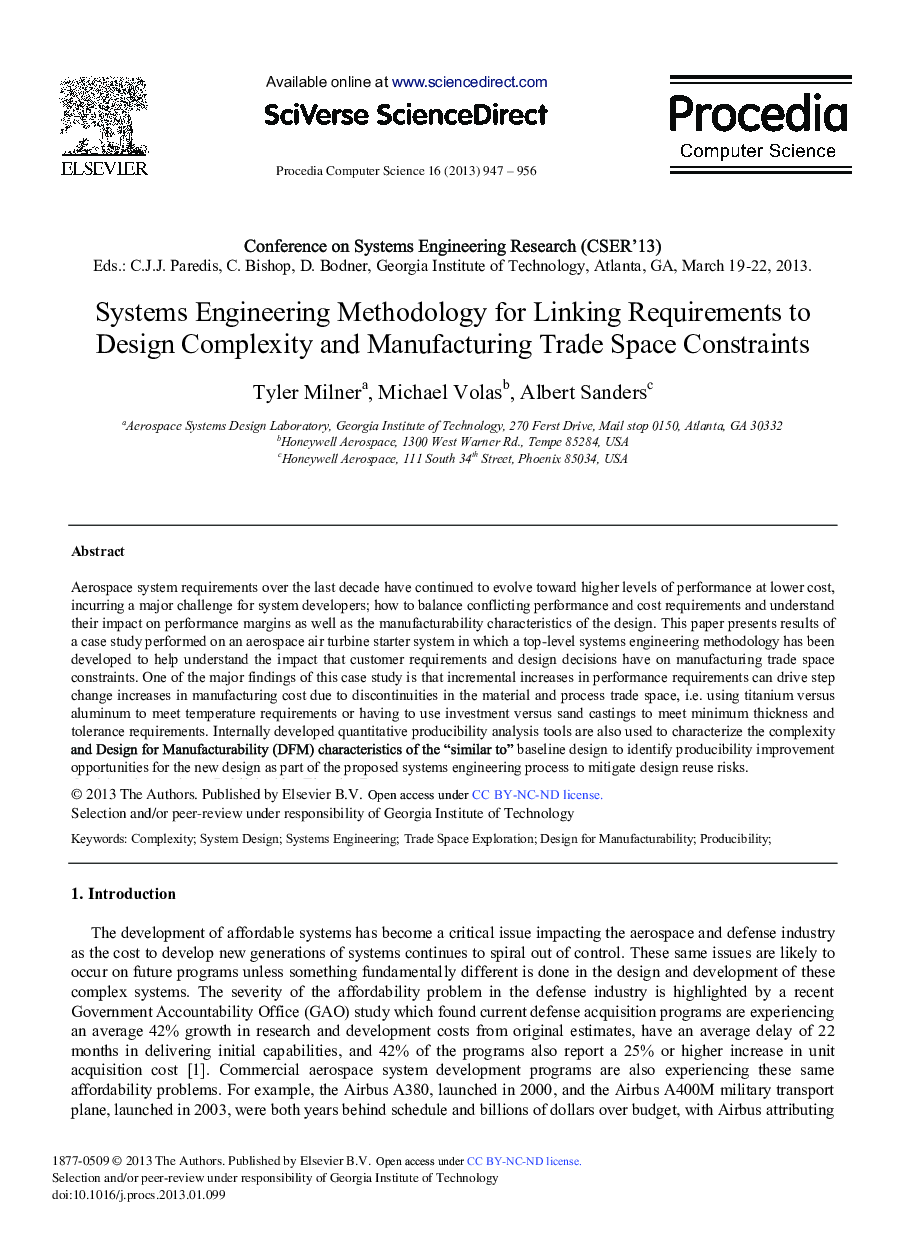| Article ID | Journal | Published Year | Pages | File Type |
|---|---|---|---|---|
| 486645 | Procedia Computer Science | 2013 | 10 Pages |
Aerospace system requirements over the last decade have continued to evolve toward higher levels of performance at lower cost, incurring a major challenge for system developers; how to balance conflicting performance and cost requirements and understand their impact on performance margins as well as the manufacturability characteristics of the design. This paper presents results of a case study performed on an aerospace air turbine starter system in which a top-level systems engineering methodology has been developed to help understand the impact that customer requirements and design decisions have on manufacturing trade space constraints. One of the major findings of this case study is that incremental increases in performance requirements can drive step change increases in manufacturing cost due to discontinuities in the material and process trade space, i.e. using titanium versus aluminum to meet temperature requirements or having to use investment versus sand castings to meet minimum thickness and tolerance requirements. Internally developed quantitative producibility analysis tools are also used to characterize the complexity and Design for Manufacturability (DFM) characteristics of the “similar to” baseline design to identify producibility improvement opportunities for the new design as part of the proposed systems engineering process to mitigate design reuse risks.
